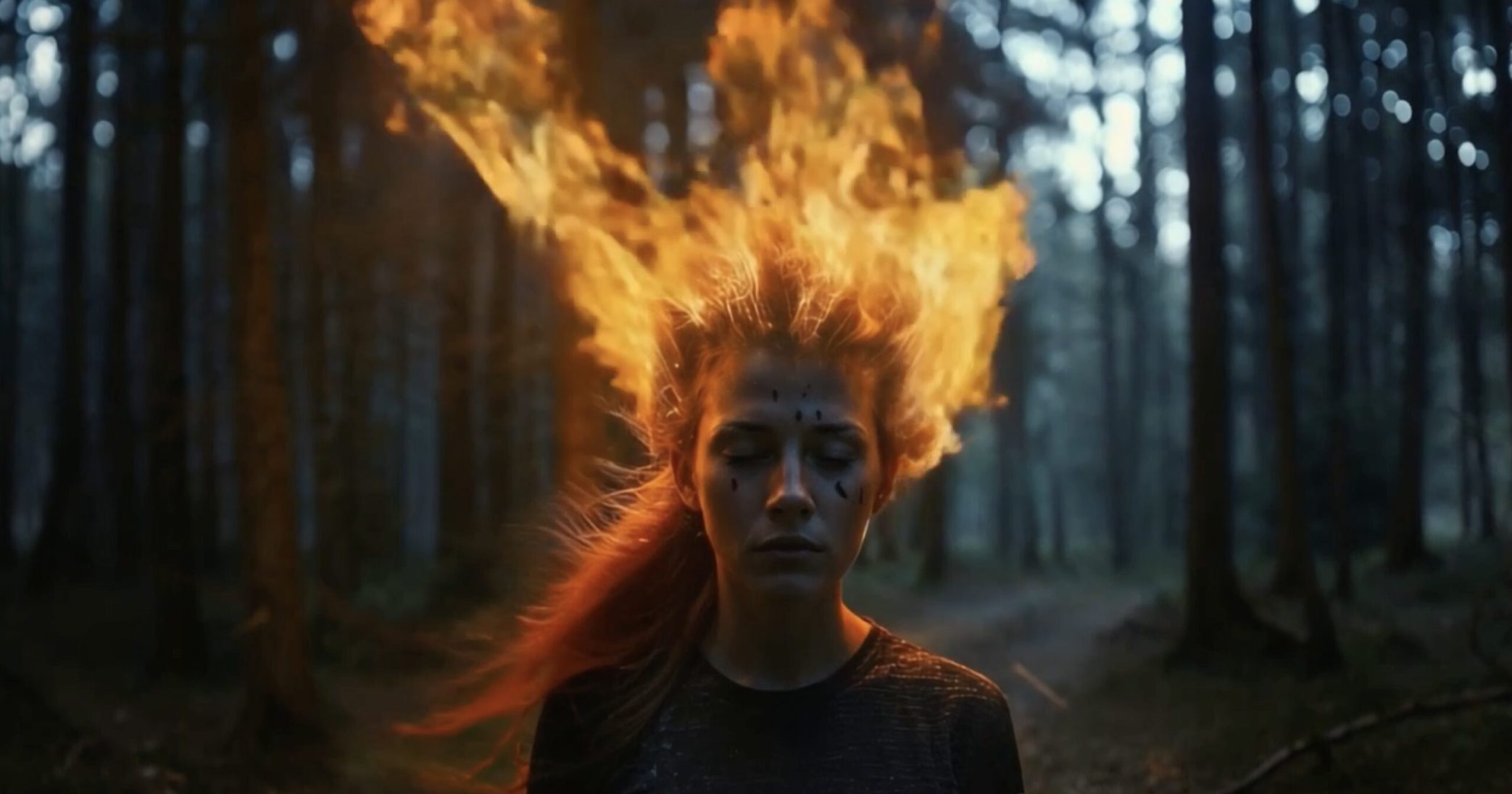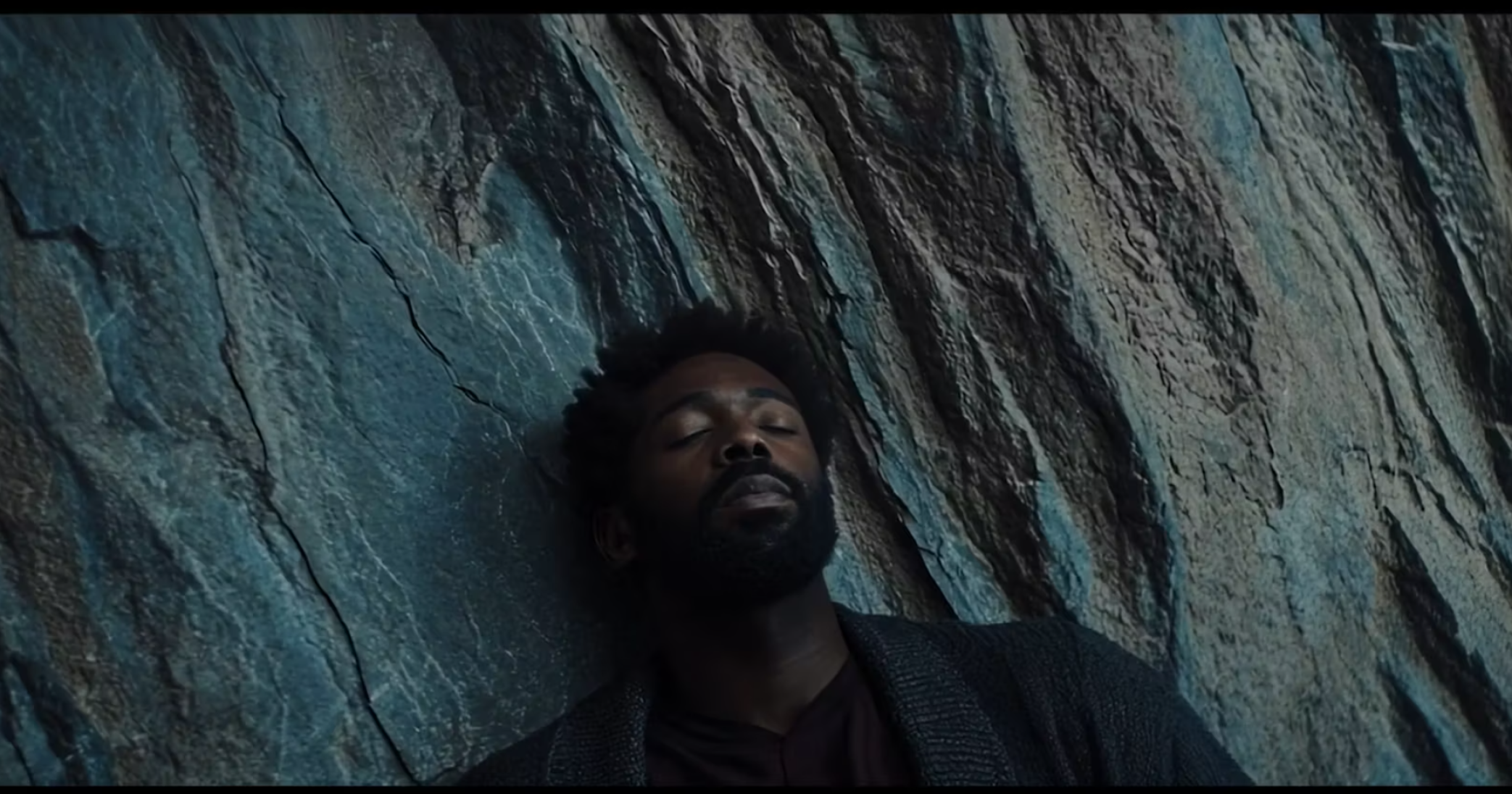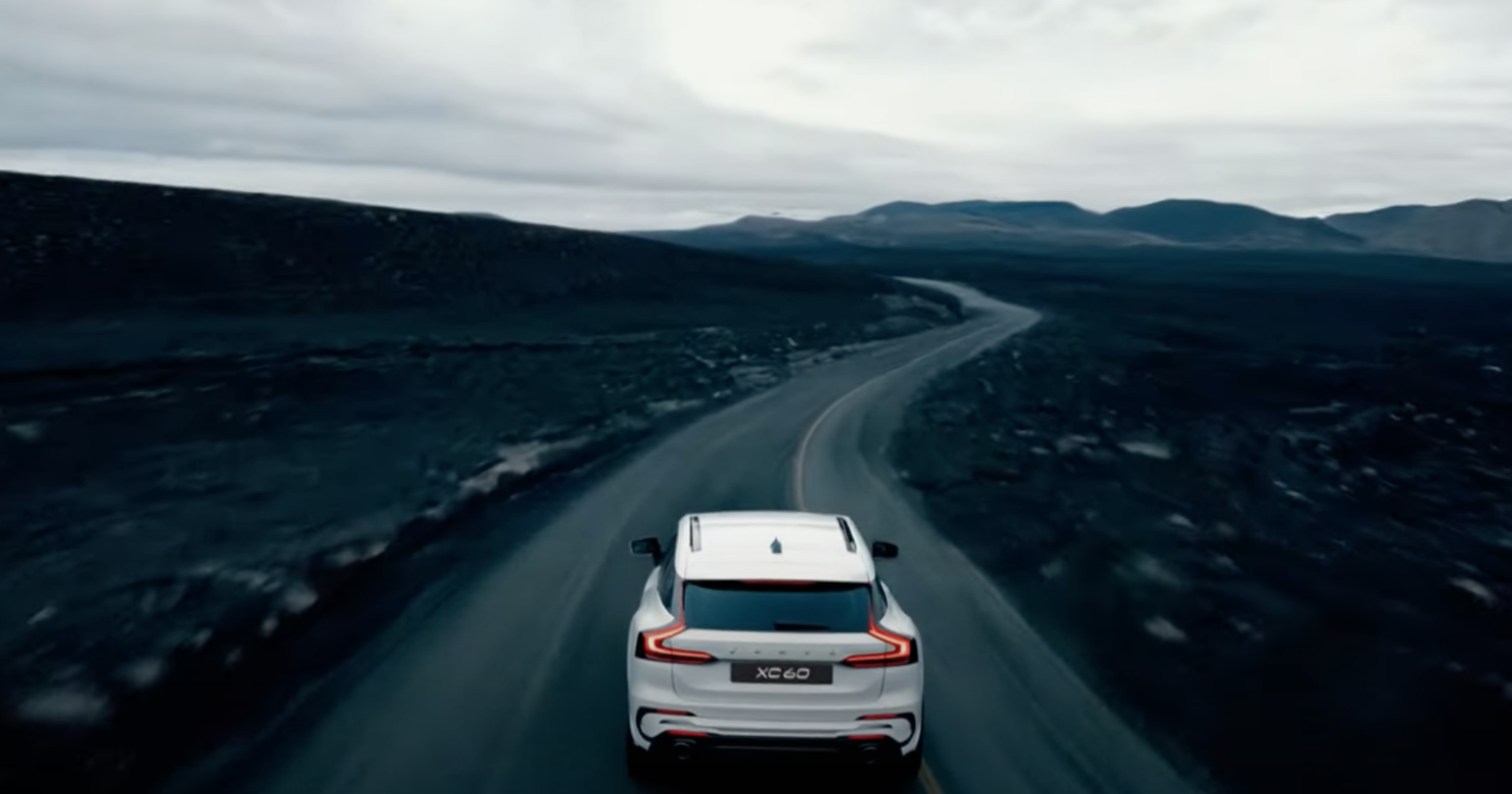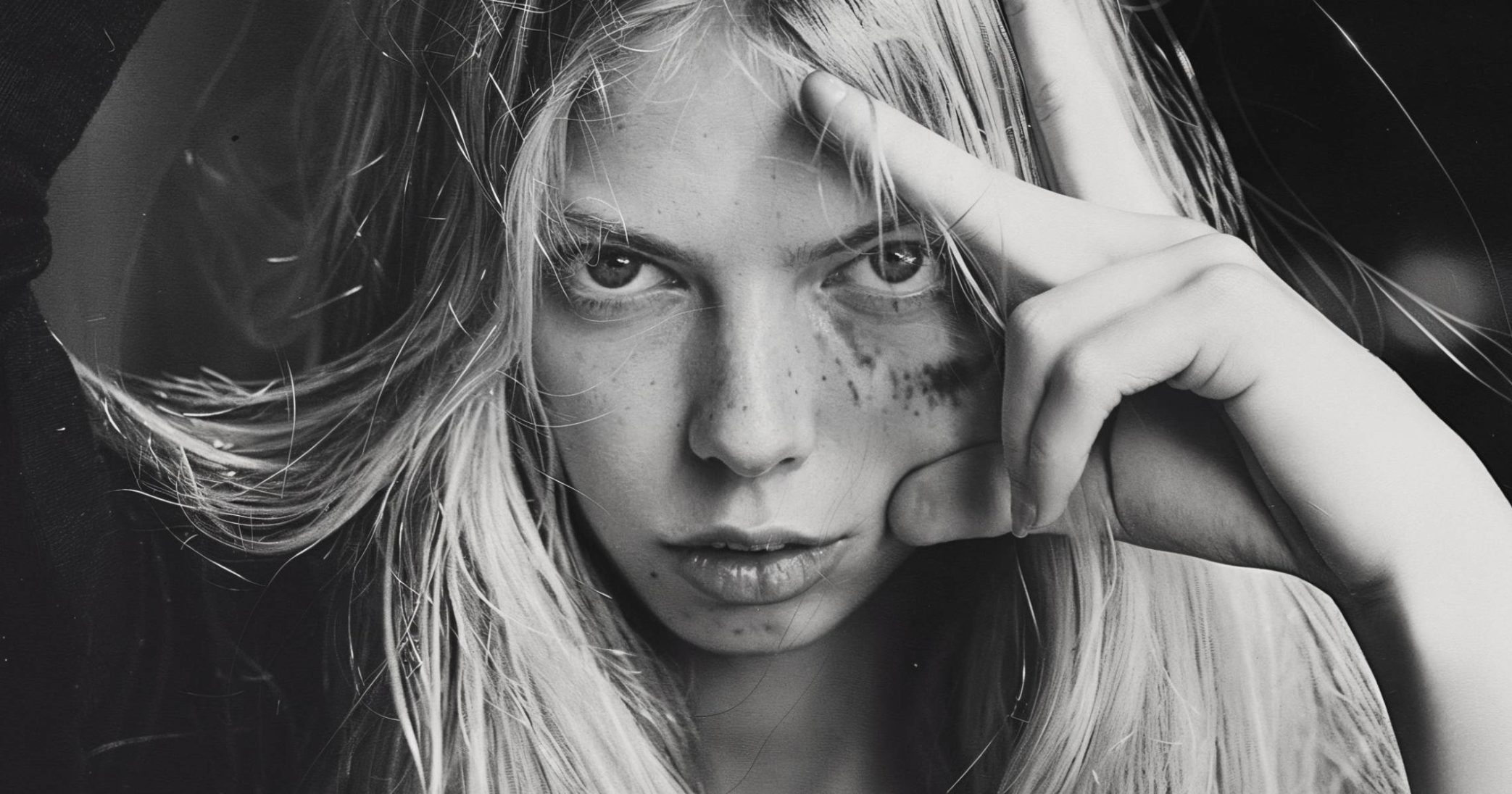How did your interest in matte painting and collage develop, and what draws you to create surreal worlds?
I started out with matte painting and collage; I’ve always liked to cut and paste things where they don’t naturally exist, creating surreal worlds. I probably have more capacity to imagine an alien having coffee on the beach and watching the world end than I do to think of anything.
Does this mean that AI and Midjourney are a tool for you to live out your creativity as a hobby?
I see it more as an escape route for the flood of ideas that keep coming to me! It speeds up the development of those ideas by 300% and helps me channel them without leaving them in the drawer of oblivion.

Can you talk a little bit more about how this is different from before. For example, the collages in Photoshop?
In a collage or a matte painting. Before AI, I spent almost more time searching for content than creating it. It’s true that this process was very enriching because you often found material you weren’t looking for, which has its advantages.
But in terms of time optimization…let’s be honest…with AI, I can request a gentleman in period clothing on a remote planet sitting in a beach hammock with desaturated retro vintage tones, and I have my own image bank in my brain, and AI materializes it in seconds.
You mentioned the efficiency that AI brings to your work. Were there any unexpected challenges or limitations you faced when integrating AI into your creative process?
The biggest challenge is knowing each tool, understanding the language and how it works. If you focus on one tool, it’s less complicated. Imagine, just in MidJourney today, there are many parameters you have to keep in mind. A good prompt is important, but it is the combination of parameters and knowing how to use them that makes a picture stand out. If we extrapolate this challenge to any generative tool… it takes many hours of practice to master the machine or achieve the desired result.
It can be frustrating at first, but it’s like riding a bike. The more you ride, the better you get, but there’s a risk that if you don’t practice, you’ll forget, especially since there’s almost a new update every week.

Could you elaborate on that? What values do you combine? Or what parameters do you play with the most?
I usually combine three styles of images that I like on their own: collage, textures, and surrealism. Most of the time, they are the same, and then I play with the weights (::1, ::1.5, etc.), giving each image the touch I think it needs at that moment. I often refer to earlier versions to generate an image, which I then use as a reference in the final prompt, especially when I want to create collages. I think the current version of MidJourney is too focused on photorealism.
How do you see the role of traditional skills, such as Photoshop techniques, evolving in a world where AI can generate content so quickly?
It’s true that AI has caught many by surprise, and the new and emerging programs are ahead of the game. Each update and integration of AI has arrived late, especially in the case of Adobe, which makes me personally rely less on traditional programs. However, I won’t deny that at the end of the generative process, I almost always turn to a traditional program to make some adjustments in levels, color, framing…

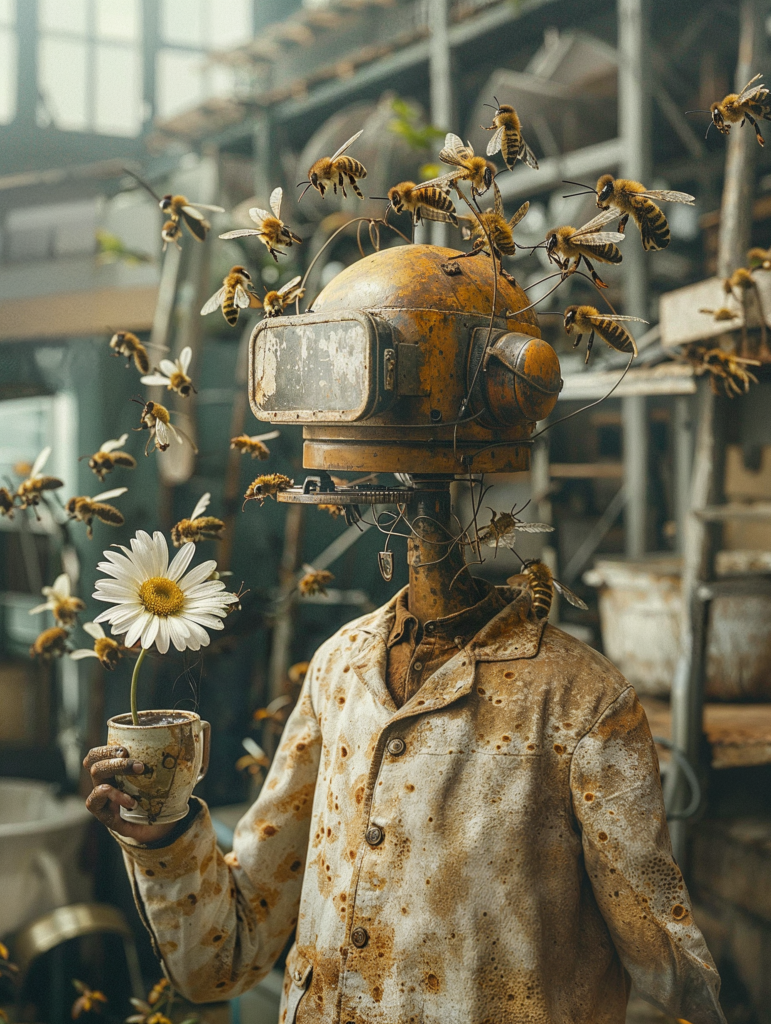
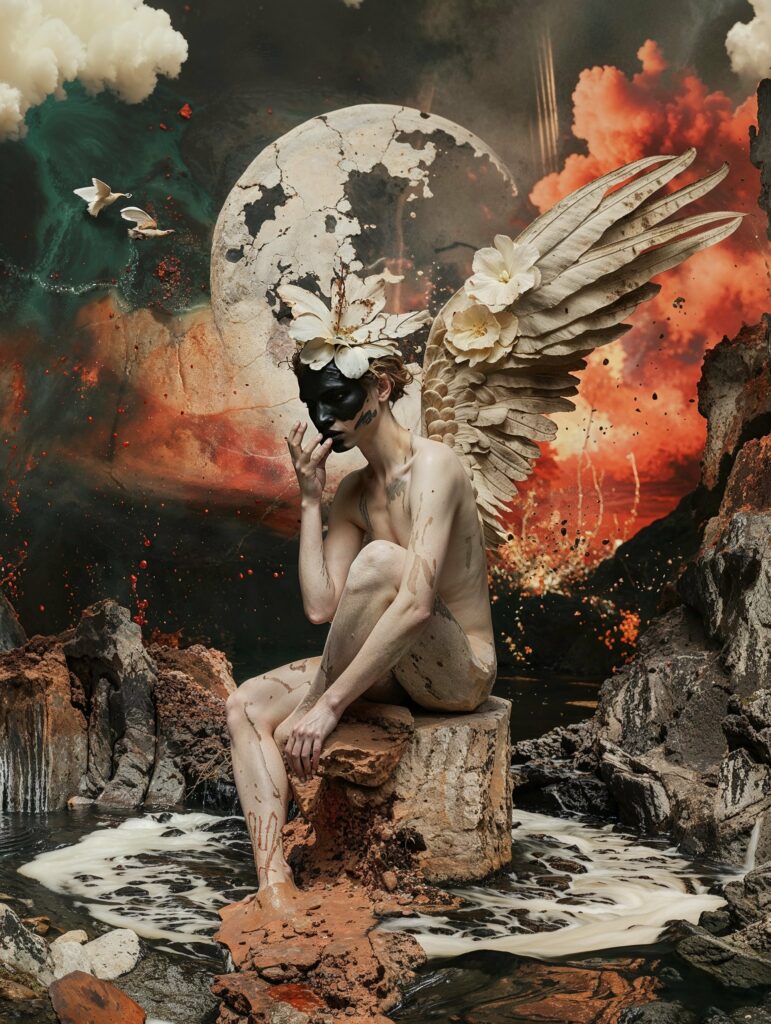
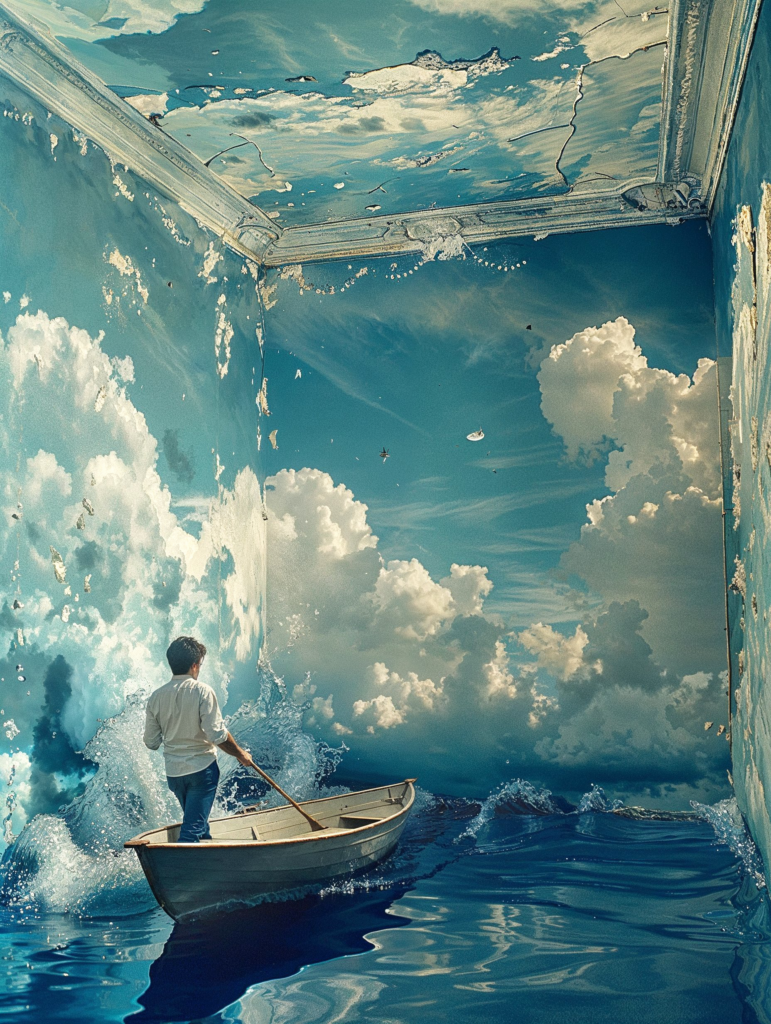

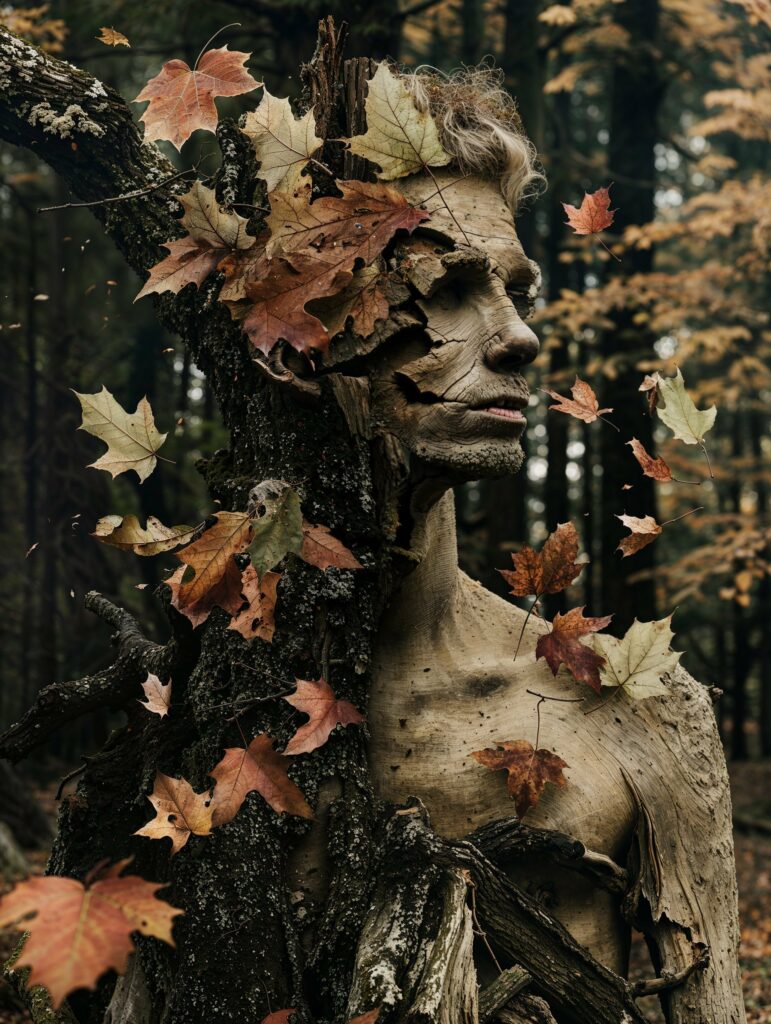
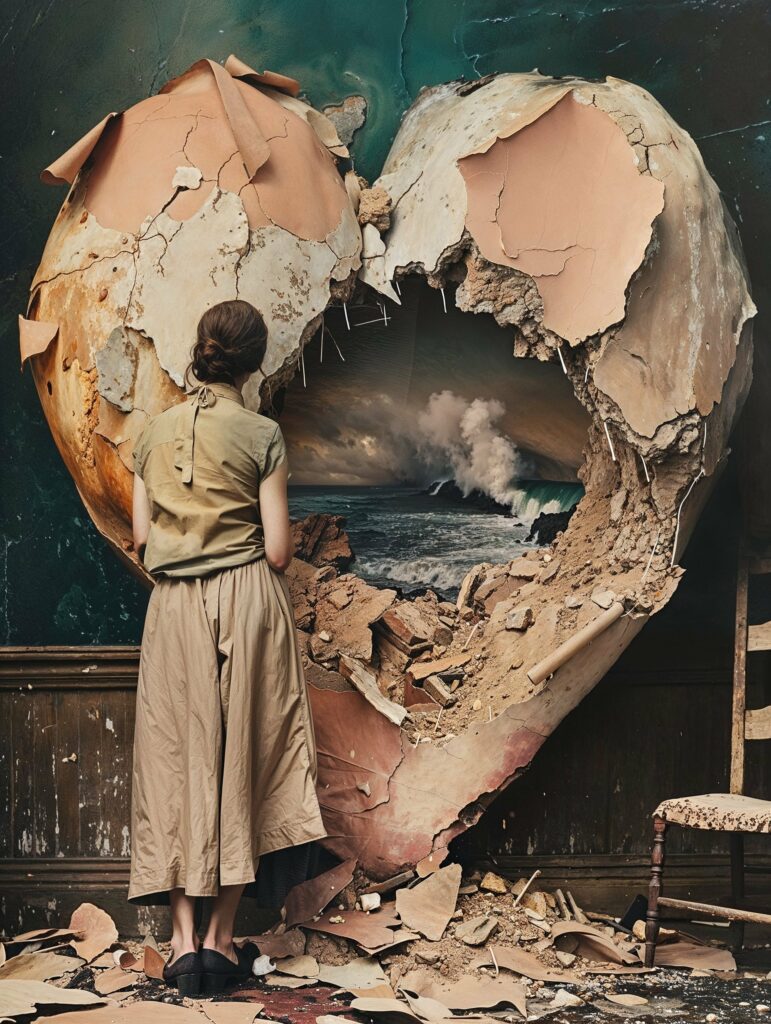
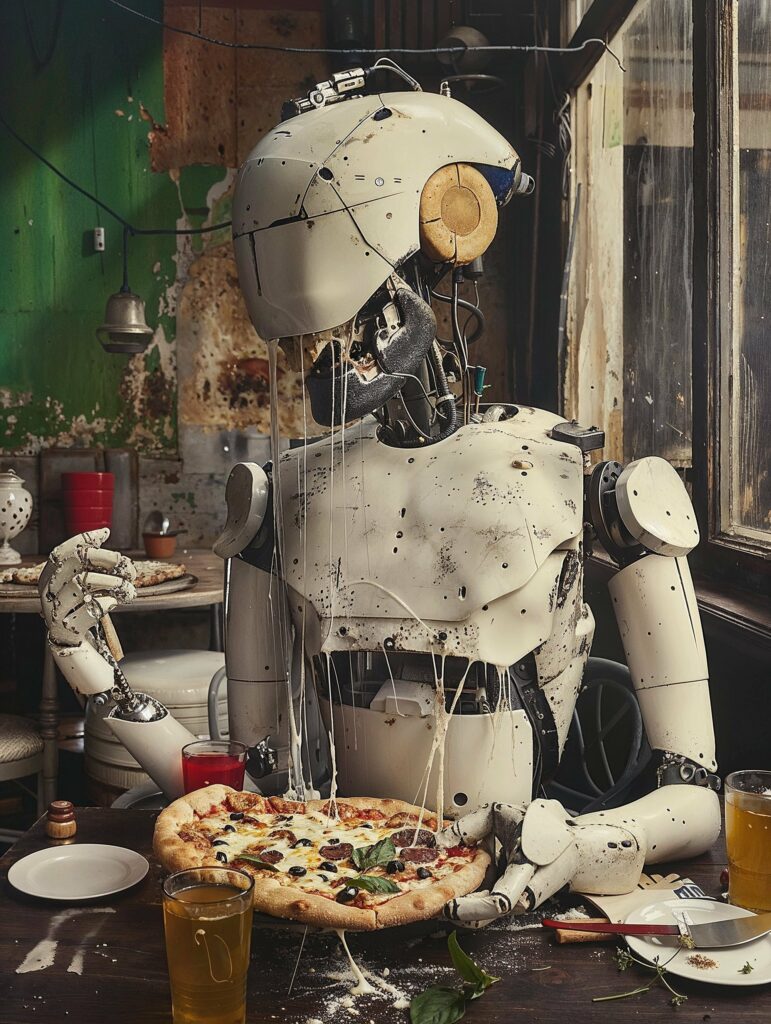
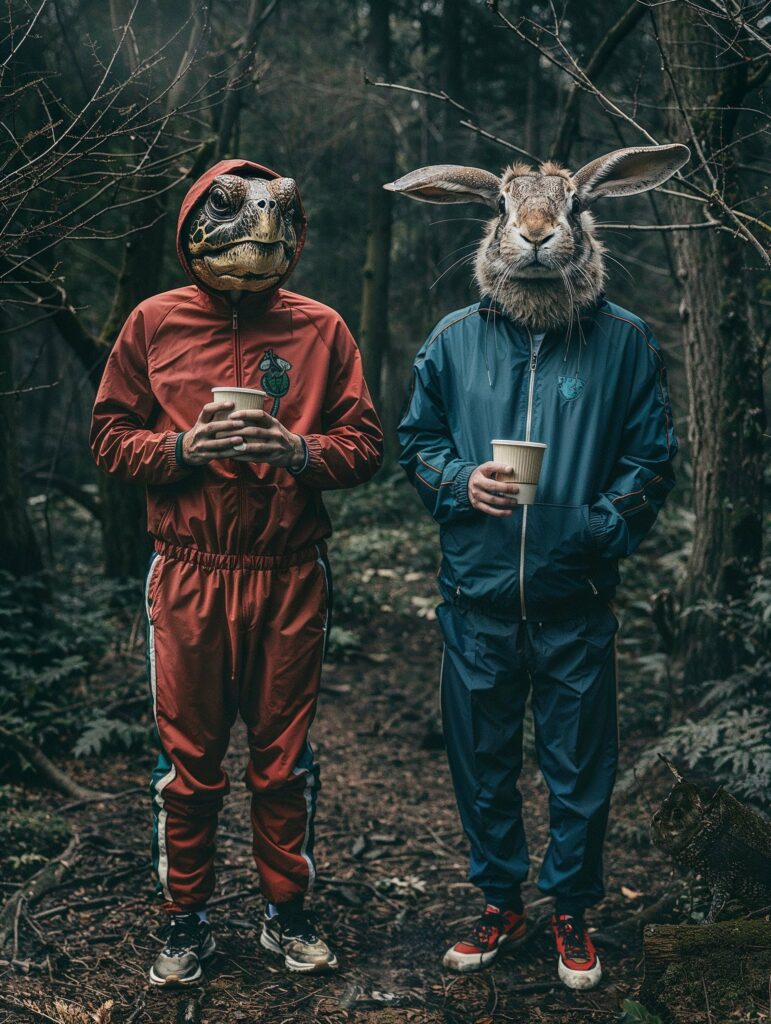
You said that AI helps you channel your ideas. Can you give an example of an idea that you think AI helped you realize more fully than traditional methods would have allowed?
Given that my tendency is almost always surrealist, how long would it have taken to create a man in pajamas drinking coffee with a tree trunk as his head, with a squirrel running around it? If I had only a traditional method to do it, I would have to search an image bank for a tree trunk, a squirrel, a man in pajamas, preferably drinking coffee and looking forward. Once I found the footage (which would take at least 1-2 hours), I would then have to blend and merge them to make it look like they all belonged in the same place. Integrating different sizes, lighting, and focus from different photos takes a lot of time and patience.
From my non-professional position and as a hobby, I probably would have left the idea halfway. This way, I can quickly realize my ideas, whereas with the traditional method, half of them wouldn’t even see the light of day.

A lot of artists say that their work lacks soul because it is produced so quickly by AI. How do you feel about that?
Traveling by car or train doesn’t make you any less of a traveler than walking. It’s just another way of traveling, just like creating art. The images have the same soul because behind that generation there is a human intention, a command, a prompt, and behind that prompt there is a feeling, a state of mind. In this creative process there is a moment for oneself and one’s creativity. That is why I think they still have soul.
I can understand that something made by hand or in a traditional, artisanal way takes more time and dedication and may have a stronger sense of belonging. But still, many times when I finish a painting that took me about an hour to make, I look at it and I know there’s a little bit of me in it, and I smile, and that’s enough for me.
How do you stay on top of the latest developments in AI tools and techniques?
Social media, when used well, is an excellent tool for staying informed. In particular, X (formerly Twitter), which I use, has strong virality, and it’s hard to miss any news because people spread updates quickly. There are also weekly podcasts and YouTube channels that keep you up to date.
It’s true that I’ve never seen an industry boom like this before. I don’t think there’s ever been such a case of development with such intensity and almost daily updates. It’s even challenging to keep up, even with the right platforms.
How do you think AI will continue to evolve and impact the creative industry?
The only thing I’m not sure about is whether it will continue to evolve at the rate it has lately; it’s absolutely frenetic. But what I am sure of is that it has no limits (other than possible legislation or restrictions). Each version and each update will be an improved version of its predecessor. The AI’s ability to transfer knowledge is unparalleled, and we will see truly amazing things, including new forms of expression and techniques that have yet to be discovered.




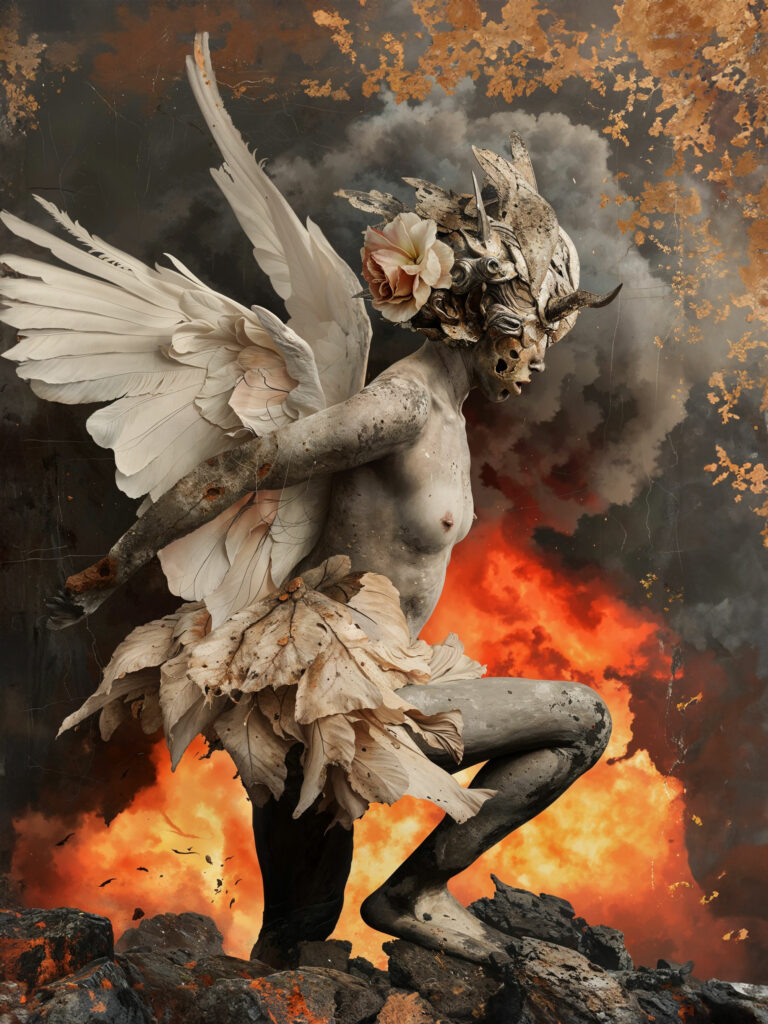
What are your long-term goals for your creative endeavors, and how do you see AI playing a role in achieving them?
In the short, medium and long term, the goal remains the same. I started using AI out of curiosity to understand what it was. Over time, I’ve realized that it’s here to stay, in all fields, in all aspects. In the creative aspect, I hope it continues to help me bring my ideas to life. Not just staying in the brainstorming stage, but allowing me to spend more time unleashing my imagination and letting the AI shape it. Always enjoying the process, the journey and the outcome, even if it’s not always what I expected. Learning and gaining experience in a landscape that I find both challenging and incredibly exciting in equal measure.
Finally, I’d like to emphasize that if there’s one thing AI has given me that no one can take away, it’s the opportunity to meet countless people. People who share the same passions and interests as I do. Even though we live miles apart, it has allowed us to connect, share, and learn together.



